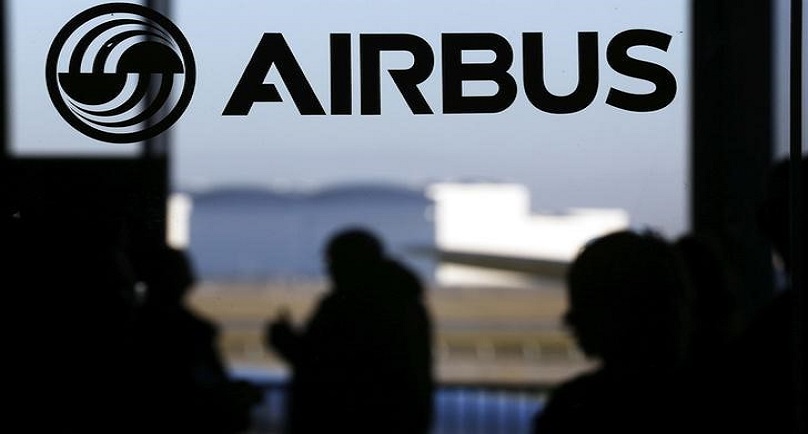Image: People are silhouetted past a logo of the Airbus Group during the Airbus annual news conference in Colomiers, near Toulouse January 13, 2015. REUTERS/Regis Duvignau
By Allison Lampert and Valerie Volcovici
MONTREAL/WASHINGTON (Reuters) – Europe and the United States tried to bridge differences over emissions standards for aircraft on Sunday as global aviation leaders prepared to adopt new rules that could affect Boeing Co and Airbus Group’s production of the largest jetliners and freighters.
Proposals being debated in Montreal by the International Civil Aviation Organization (ICAO), the United Nations’ aviation agency, would force makers of the world’s largest passenger jets to upgrade or stop producing certain models as early as 2023, according to sources close to the negotiations and documents seen by Reuters.
U.S. and European negotiators are trying to come up with the world’s first carbon dioxide emissions standards for aircraft as part of the industry’s contribution to efforts to combat climate change.
Aviation was not included in the global climate deal agreed by a UN conference in Paris in December, but ICAO is trying to nail down the first of its two-part strategy as soon as Monday after six years of talks. It is due to finalize a market-based mechanism for all airlines later this year.
Differences remain on where to place the bar on efficiency, with the United States and Canada pushing for more stringent targets than the European Union, while environmental groups have accused Europe of dragging its feet.
“The CO2 standard will push industry to be as fuel-efficient as possible in all market conditions to reduce GHG (greenhouse gas) emissions and the impact of aviation on climate change,” stated the Canadian paper presented at ICAO last week.
The proposals could revive pressure on European planemaker Airbus to upgrade the world’s largest passenger jet, the A380 superjumbo, with new engines. Airbus recently examined that proposal to boost sales, but it has dropped down its list of priorities.
It could also spell the end for Boeing’s struggling 747-8 passenger jet and freighter and force the U.S. planemaker to upgrade at least one of its two smaller freighters.
Airbus and Boeing declined to comment on negotiations.
The Montreal talks, which run until Feb. 12, are designed to set ambitious rules for new types of aircraft in the future.
A less stringent standard would apply to aircraft already in production, but this has led to the fiercest arguments since some of these planes would need to have costly improvements.
The fuel efficiency standards would apply to smaller business and regional jets, along with larger commercial planes weighing at least 60 tonnes that account for the majority of aviation sector emissions, two sources familiar with the matter said.
The rules for in-production aircraft would come into effect by 2023, but could also be phased in over a five-year period until 2028, one source said. The tougher standard for new designs could go into effect by 2020.
Participants have been weighing 10 different options for new targets, with one being the weakest and 10 requiring the greatest reduction in emissions, the documents seen by Reuters showed.
European representatives have said they will not back a standard higher than 6 on large planes in production.
The United States and Canada had initially backed options 8 and 9 but said they would not budge below a 7, and at one stage did not rule out breaking off talks, the sources said. However, on Sunday some progress was reported in narrowing differences.
Tougher standards have higher cost implications for planemakers.
While Airbus and Boeing have already planned more fuel-efficient upgrades to most of their programs, including the popular A320 and B737, some jets would have to be upgraded or cease being produced by as early as 2023.
“They’re not content,” one delegate said of the jetmakers.
A question mark remained over the current-generation wide-body jets produced by Airbus and Boeing, the A330 and 777-300ER.
Both are likely to be superseded by new models before 2023, but aviation analysts have said recent market experience and low oil prices suggest demand for older jets can be resilient.
Environmental groups said the standard will boost efficiency, but it will only make a small dent on the industry’s greenhouse gas emissions, which are projected to triple or quadruple from current levels by 2040. They say the standard needs to be accompanied by a strong global market-based approach.
(Additional reporting by Tim Hepher in Paris and Alwyn Scott in Seattle; Editing by Bill Rigby)
Copyright 2015 Thomson Reuters. Click for Restrictions.


